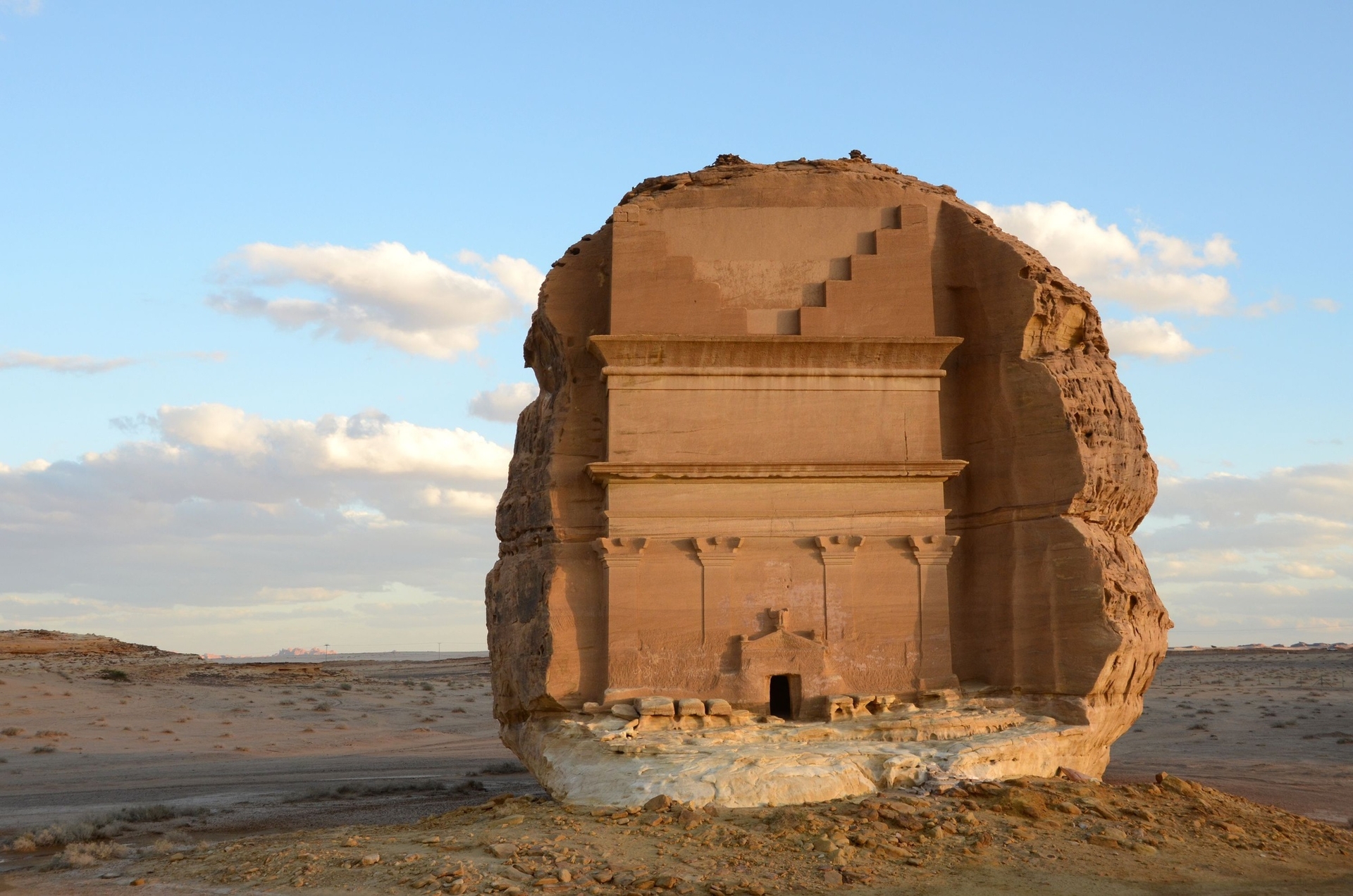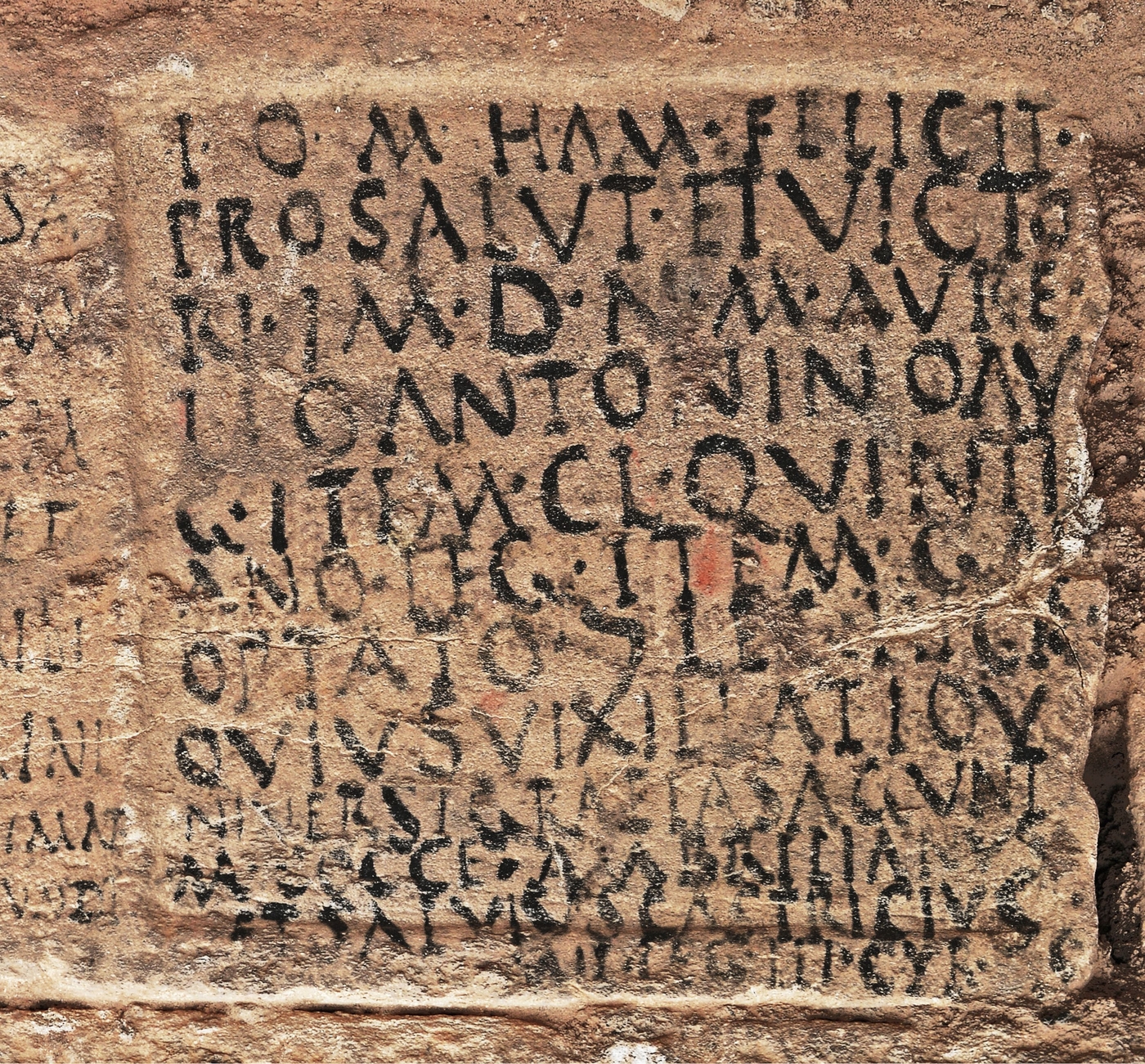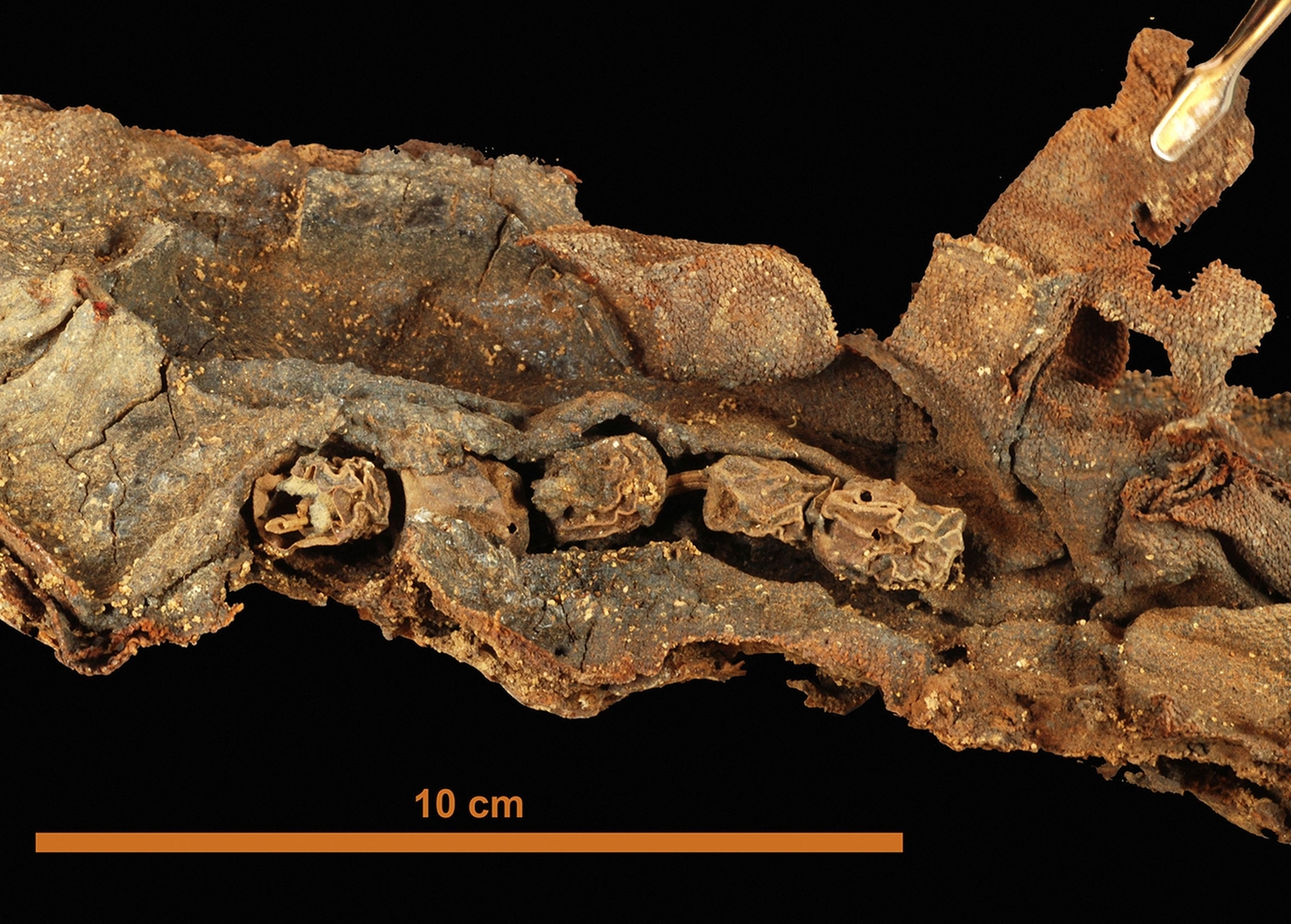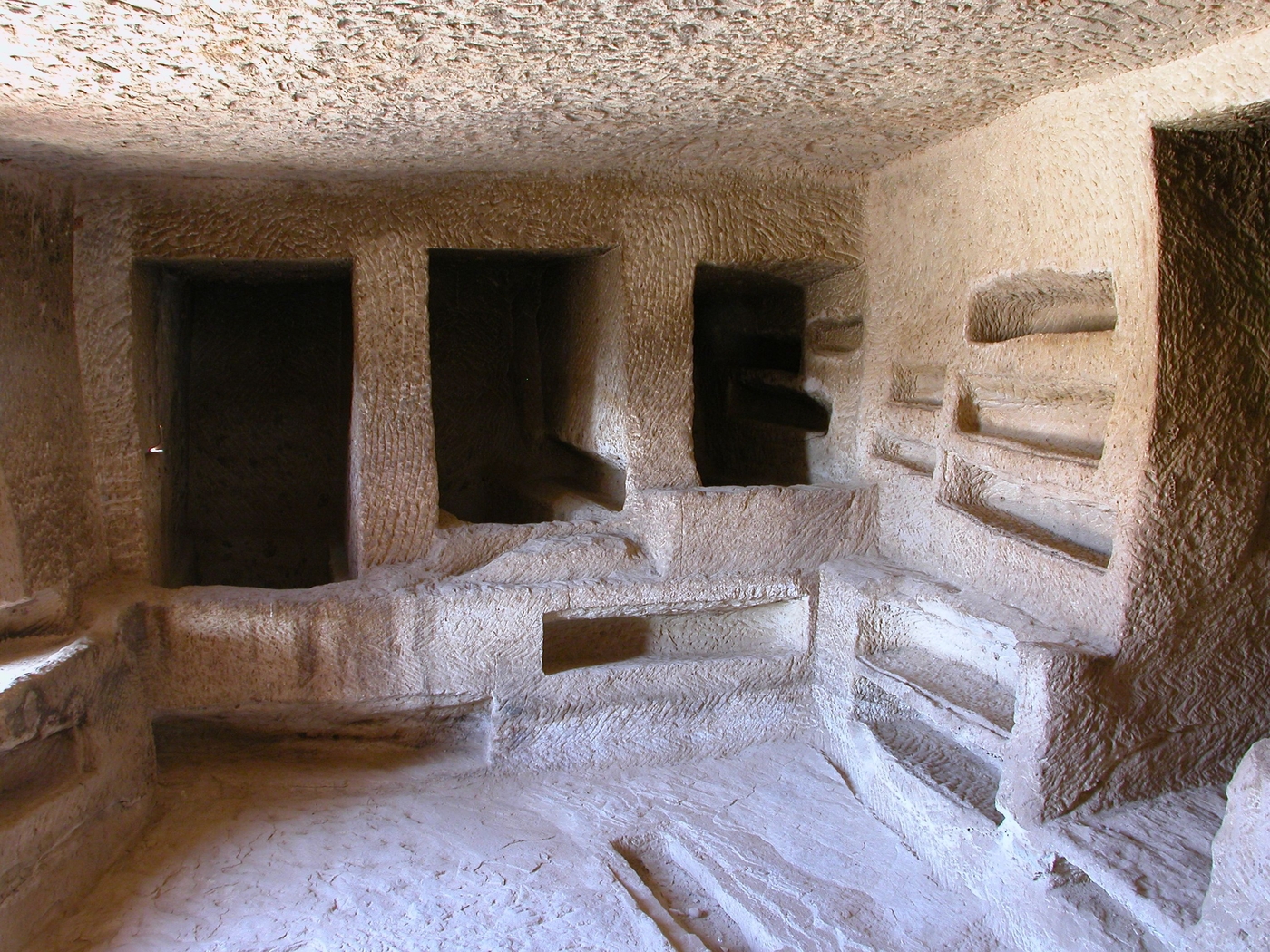Hegra
Hegra, often called Madain Salih, is an archaeological site in the mountains of Hijaz, to the north west of Saudi Arabia, some 300 km to the north west of the city of Medina. It is primarily a Nabataean and Roman site, mainly occupied in first three centuries CE.

Hegra is on the incense caravan route that crossed the Arabian peninsula in Antiquity. As happened at Petra in Jordan, the Nabataeans cut dozens of stone tombs with monumental facades into the rock and built a city there.
Discovery and excavations
The site has been known about and described since the 19th century and was extensively explored in the early 20th century by the Dominican fathers from the École Biblique et archéologique française de Jérusalem. A French-Saudi mission, under the auspices of the French Ministry for Europe and Foreign Affairs, has been carrying out excavations and surveys in the area since 2002. The vast site is composed of an oasis that made it possible to live in the desert, a town built largely from unfired bricks, several stone necropolises and a largely religious sector.
Hegra in Antiquity
In Antiquity, Hegra was on the southern border of the Nabataean kingdom. In 106 CE, the kingdom was annexed by the Roman emperor Trajan to form a new Roman province, Arabia, that stretched at least as far as Hegra. Several Greek and Latin inscriptions, written by Roman soldiers belonging to the legions, or by auxiliary troops, have been found in recent years. They attest to the presence of Roman troops stationed in the Roman camp of Hegra, the southernmost part of the Empire, discovered by the French-Saudi mission in 2015.
Hegra under the Nabataeans
Under Nabataean rule, the centre of the site was occupied by a town spread over fifty or so hectares, surrounded by a rampart with bastions. Inside this rampart, the living quarters, composed of houses mainly built from unfired bricks, were separated by streets and alleyways that did not intersect at right angles, unlike towns on a grid plan. At the centre stood a sanctuary, perhaps devoted to the “sky god", a supreme deity unknown elsewhere in the Nabataean kingdom and mentioned in two inscriptions in Hegra. The sanctuary, composed of a sort of baldaquin with four columns built at the top of a rocky mound and a low terrace surrounded by a sacred enclosure, would probably have been visible from a great distance.
Advanced water system
The town and oasis were supplied with water by more than 130 wells dug partly into the sediment and partly into the fairly soft sandstone rock. They provided access to a well-supplied water table that was only a few metres from the surface in Antiquity. Some wells would have been as large as 7 metres in diameter and 20 metres deep. Research into the plant remains contained in the sediment removed during excavations revealed an oasis-type agriculture characterised by crops on three levels, with the date palm on the upper level, fruit trees on the middle level (olive, pomegranate, fig and vines), cereals (barley and species of wheat) and to a lesser degree legumes (lentils, peas, lucerne and chickpeas) on the lower level. Cotton seeds were also found for the first time in this part of the Near East.
Monumental tombs
The most prestigious monuments are undoubtedly the monumental tombs, which include 94 tombs with decorated frontages, the largest of which measures 21 metres high and the smallest less than 3 metres, scattered among the necropolises erected around the town. Around one third of them have a legal inscription in Nabataean on the front, giving the name of the owners, generally members of a single family, the name of the stonecutter and the date it was produced, expressed as the year of the reign of the Nabataean king in question. All of the inscribed tombs date from the years 1 to 75 CE.
Funerary rituals
Excavations carried out inside several of the tombs have made it possible to reconstruct the funerary rituals used by the Nabataeans of Hegra for the first time. The body was prepared in the home of the deceased. It was probably naked since no traces of clothing have been found. In one of the excavated tombs, a necklace of dates, strung on a plant thread while still fresh, were conserved around the neck of the deceased. The body was wrapped in three successive fabric shrouds, the first in hair, the other two in linen. One of the layers was covered in a mix of resins and fatty acids to delay decomposition. The face was covered with a leather funeral mask. A final shroud, this time in leather and closed with straps, was wrapped around the body which was then placed in a transportable shroud with handles. The deceased was then carried, probably by members of their family, to the burial chamber where they were placed in a niche before closing the door and placing offerings in front of it in pottery vases.
To feel at home in Hegra, as in Petra, the Nabataeans also needed special places where they could gather as religious confraternities. These were held in banqueting rooms, generally with three couches (triclinia) most of which were built in a remote area to the north-east of the site, far from the agitation of the town, which is now known as Jabal Ithlib. During these meetings, they ate a meal together in groups of 13, entertained by two musicians.
The project is supported by the French Ministry for Europe and Foreign Affairs on the advice of the Excavations Board (Commission des fouilles).
Useful links
- Website of the UMR Orient & Méditerranée and the page relating to the Mission archéologique de Madâin Sâlih.
- Website of theAcadémie des inscriptions et Belles Lettres, May 2018.
- Interview with James Wiener for theAncient History Encyclopedia et cetera, 2017.
- May 2018, Le Journal du CNRS, in: "Hegra livre ses splendeurs".
- Le Monde, 7 October 2019: Pierre Barthélémy "Sur les traces des maîtres d’Hégra, perle du désert arabe".
Learn more
- 2019, 6 March, TF1, news programme (in French) presented by Gilles Bouleau, report lasting 5’40
- 2017, Report on Arte in the series “;Enquêtes archéologiques", 26 mn.
- 2019, Talk by Laïla Nehmé given in Dar al-Athar al-Islamiyya (Kuwait City)
- Nehmé L. 2019 : Archéologie au pays des Nabatéens d’Arabie. Guide de Hégra, Paris, Maisonneuve & Larose Nouvelles éditions / Hémisphères.












